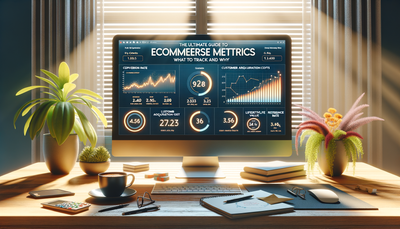Creating an Effective 'Sustainability' Page for Eco-Conscious Businesses
In today's eco-conscious market, showcasing your business's commitment to sustainability is crucial. A well-crafted 'Sustainability' page on your website can effectively communicate your environmental initiatives, attract like-minded customers, and strengthen your brand's position. This guide will walk you through the essential elements of creating an impactful sustainability page, offering insights on how to structure your content, highlight key initiatives, and leverage your eco-friendly practices for brand differentiation. Whether you're just starting your sustainability journey or looking to enhance your existing efforts, this article will provide valuable tips to help you create a compelling narrative that resonates with environmentally conscious consumers.Table of Contents:

The Importance of a Sustainability Page
A dedicated sustainability page serves as a central hub for communicating your business's environmental efforts and values. It's an opportunity to transparently share your commitment to eco-friendly practices, which can significantly impact consumer perception and loyalty. In an era where environmental concerns are at the forefront of many consumers' minds, showcasing your sustainability initiatives can be a powerful differentiator.Moreover, a well-designed sustainability page can help build trust with your audience, attract environmentally conscious customers, and even open doors to partnerships with like-minded organizations. It's not just about marketing; it's about demonstrating genuine commitment to a cause that resonates with a growing segment of consumers.
Do you need a website? Want to build a website but don't know where to start? Our website builder is the perfect solution. Easy to use, and with the ability to customize to fit your business needs, you can have a professional website in no time.
Key Elements to Include
When creating your sustainability page, consider including these essential elements:1. Mission Statement: Clearly articulate your company's sustainability goals and vision.
2. Current Initiatives: Highlight ongoing eco-friendly projects and practices.
3. Measurable Impacts: Share quantifiable results of your sustainability efforts.
4. Future Goals: Outline your plans for future environmental improvements.
5. Certifications and Partnerships: Display any relevant eco-certifications or collaborations.
6. Employee Involvement: Showcase how your team contributes to sustainability efforts.
7. Customer Participation: Explain how customers can join in your eco-friendly initiatives.
8. Sustainability Report: Provide access to detailed sustainability reports if available.
By incorporating these elements, you create a comprehensive picture of your business's commitment to environmental stewardship.
Effective Communication Strategies
Communicating your sustainability initiatives effectively is crucial for engaging your audience. Use clear, concise language that avoids jargon and speaks directly to your customers. Employ storytelling techniques to make your initiatives more relatable and memorable. For instance, share the journey of how a particular eco-friendly practice was implemented and its positive impact.Visual elements play a significant role in communication. Use infographics, charts, and high-quality images to illustrate your sustainability efforts and their impacts. Video content can be particularly effective in showcasing behind-the-scenes looks at your eco-friendly practices or featuring testimonials from employees involved in sustainability projects.
Remember to update your sustainability page regularly with new initiatives, progress reports, and achievements to keep the content fresh and demonstrate ongoing commitment.
Building a website with SITE123 is easy
Leveraging Sustainability for Brand Positioning
Your sustainability efforts can be a powerful tool for brand positioning. Use your eco-friendly initiatives to differentiate your business from competitors and appeal to environmentally conscious consumers. Highlight how sustainability is integrated into your core business practices, not just an add-on.Consider creating a unique sustainability brand or slogan that encapsulates your eco-friendly commitment. This can be used across marketing materials to reinforce your positioning. Engage with your audience on social media platforms, sharing updates about your sustainability efforts and inviting customer participation.
Collaborate with environmental organizations or participate in eco-friendly events to further strengthen your brand's association with sustainability. These partnerships and activities can provide additional content for your sustainability page and reinforce your commitment to the cause.
Encouraging User Engagement
Make your sustainability page interactive to encourage user engagement. Include features such as:1. A carbon footprint calculator related to your products or services
2. A forum or comment section for customers to share their own eco-friendly practices
3. A pledge system where customers can commit to supporting your sustainability initiatives
4. Social media integration to allow easy sharing of your eco-friendly content
5. A newsletter sign-up for sustainability updates
By involving your audience, you not only increase engagement but also foster a community of environmentally conscious consumers around your brand. This can lead to increased customer loyalty and word-of-mouth marketing.
Measuring and Reporting Impact
Transparency is key when it comes to sustainability claims. Include concrete data and metrics on your sustainability page to demonstrate the real impact of your initiatives. This could include statistics on energy savings, waste reduction, or carbon emissions avoided.Consider using recognized sustainability reporting frameworks such as the Global Reporting Initiative (GRI) or the Sustainability Accounting Standards Board (SASB) to structure your reporting. This adds credibility to your claims and makes it easier for stakeholders to understand and compare your performance.
Regularly update these metrics to show progress over time. An annual sustainability report can be a comprehensive way to communicate your efforts and achievements, with key highlights featured on your sustainability page.





